Born in Portland, Oregon, Justin James Reed has lived all over the United States and consistently draws from this disparate experience for inspiration. He studied at the Tyler School of Art (MFA) and Minneapolis College of Art & Design (BFA). His work and artist book have been exhibited widely, including: New York City, Brooklyn, Chicago, Miami, Philadelphia, Toronto, Copenhagen, Sydney, and Paris. In addition, his photographs were featured in The Collectors Guide to Emerging Art Photography (Humble Arts Foundation) and most recently in Capricious Magazine. He is a member of the international photography collective, Piece of Cake, and currently lives in Southwest Virginia.

Hanging exhibition of photographer Jeff Rich’s “Watershed” project with students
Justin - Since you’re a recently hired Assistant Professor at Virginia Intermont College, tell us about your career up to this point? What experiences preceded your move to VIC? What made you choose a teaching career?
JJR: I should start by saying that I originally had no attentions of going on to college after high school. The school environment seemed taxing and only half interesting to me at that time. It was not until I found photography through friends that it even crossed my mind to go back to school. Photography was immediately something that I wanted to do for myself, and knew would make me happy for the rest of my life. I like to share this with students specifically, because I believe it is important to think about the difference between thinking you want to do something and intuitively knowing something. This realization is important while considering a future career, and critical when it comes to art making itself. Perseverance and patience are two essential qualities to attaining ones goals, and if you find something you love, it makes it all the more easy. While it took many years to understand intellectually exactly what it was that seemed so appealing about teaching itself, I knew I wanted to do it at the very beginning of my undergraduate education.
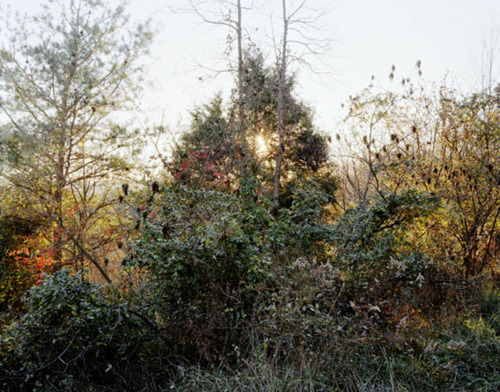
© Justin James Reeed, 150+/- Acres, St. Paul, Virginia 2010, from the series, 'The Real Unknown'
I began teaching in graduate school at the Tyler School of Art in Philadelphia. As with many large university graduate programs, students are offered the opportunity to teach undergraduate classes for tuition remission, an aspect that largely drew me to the program in the first place. After graduate school I began to take Adjunct positions around the Philadelphia region, at first having to maintain several non-teaching jobs to make ends meet. Before I took the full time position I have now, I like many Adjunct teachers, was eventually able to make a living solely teaching by instructing at multiple colleges simultaneously. For me it was The College of New Jersey, Pennsylvania College of Art & Design, Moore College of Art & Design, and Tyler School of Art. This experience, while grueling at times, introduced me to a large variety of approaches to art instruction and institutional ideology. My current job at Virginia Intermont College, which is a small school in Southwest Virginia, has introduced me to another collegiate dynamic, liberal arts education.
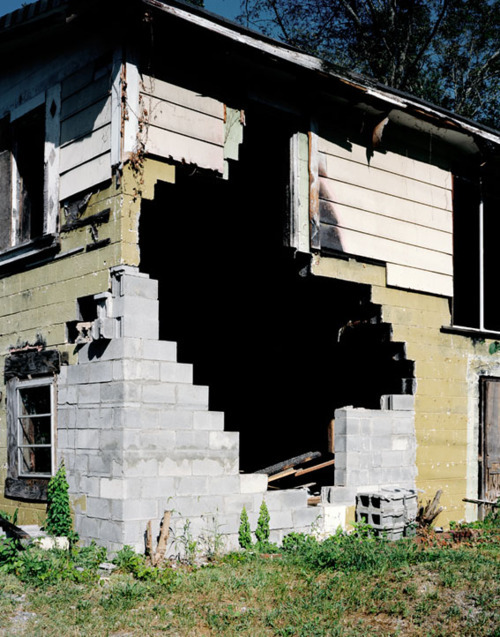
© Justin James Reed, (Untitled) 2010, from the series 'In Heaven' (TDIAQB)
My general philosophy when it comes to teaching is that my most potent asset is an active and engaged artistic life. Making work involves continuously exploring and utilizing the tools of whatever medium I might be concentrating on at that time. Being a mentor, through constant output and energetic engagement with art, is arguably my most powerful tool as a teacher. The experience of exploring changing ideas and trends on a daily basis with young minds is inspirational, and as essential to creating an interesting class as it is to my life as an artist.
This series of interviews features schools as well as the teachers, and discusses the current state of photography education in the US. Can you introduce us to your photography program at Virginia Intermont College? The Size, the number of students, classes you teach, student’s demographics?
JJR: As I mentioned, Virginia Intermont College, is a small liberal arts school. We only have about 525 students all together, with anywhere from 55 – 60 being photography majors, an interesting ratio, making our department one of the largest on campus. While a majority of our students come from Virginia and the surrounding southern states, we have students from all over America, in addition to a number of different countries. The photography program itself is in transition, as, it appears, are many around the country. With digital and new media changing technical trends in the medium, I believe so is the actual presence of photography in the art world. Therefore a large part of the academic discussion is placed upon what is the best ideology and course structure to prepare students for life post graduation. What are realistic expectations for undergraduate students to embrace? Being a liberal arts college, I personally see our main mission as one of introducing students to as wide variety of thought and discourse as possible. With this as a main underpinning of their education I think my students will be able to approach their future lives intellectually curious and open to possibilities.
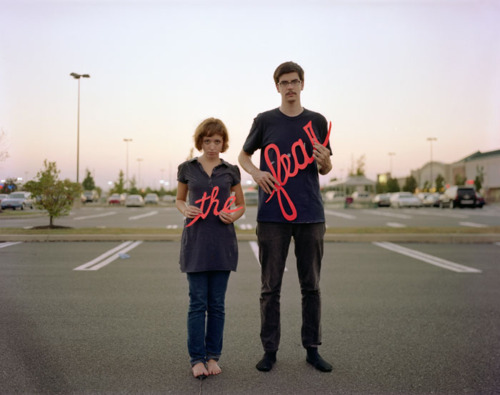
© Justin James Reed student’s work: Abbey Lee Sarver, 2007
One of the things that make my teaching experience itself different from perhaps what it could be at another school is the actual course load itself. I currently teach (5) different classes a semester, ranging from traditional studio courses to smaller (1) credit workshops. This creates the opportunity to have very small class sizes, typically 5-8 students, and to instruct a wide variety of subjects. Currently I teach: Digital Imaging One, Senior Seminar, Exhibition Studies, and Introduction to Liberal Arts. The Liberal Arts course is perhaps the most unexpected addition to my roster as it is the first class I have taught outside of an art department. While exploring critical texts throughout the literary world and engaging in thoughtful discussion in this particular forum is new, it has always played an important role in all my courses. I strongly believe that engaging with theory surrounding a given subject or medium is as critical as technical precision. Therefore my classes, in conjunction with traditional technical texts, always incorporate a variety of readings to enlighten general understanding of current conceptual thought surrounding that mode of expression. Additionally I teach, Web Design 2, Lighting 2, and Mac Media.
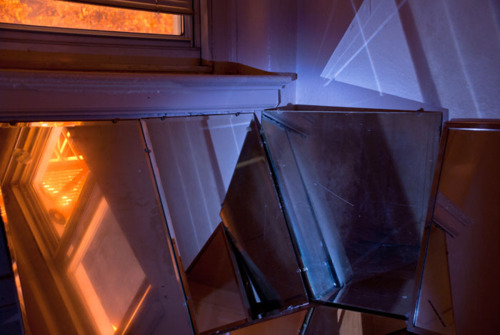
© Justin James Reed student’s work: Jacob Peltz, 2010
I was first introduced to your work through the series 'New Cities'. Please discuss the themes in your creative work and how they relate to the interests in your teaching. Are there specific projects or classes that you relate to contemporary landscape? How important is this discourse in the study of contemporary photography?
JJR: Being in the early stages of my career I am very comfortable saying that I am still deep in the investigative phase when considering projects and contiguous trends in my work. In many ways I believe this allows me to keep an open mind when interacting with my students, in addition to reinforcing the notion that they do not have to develop any specific “style” in school, only that they understand how to express their ideas consciously and cohesively. 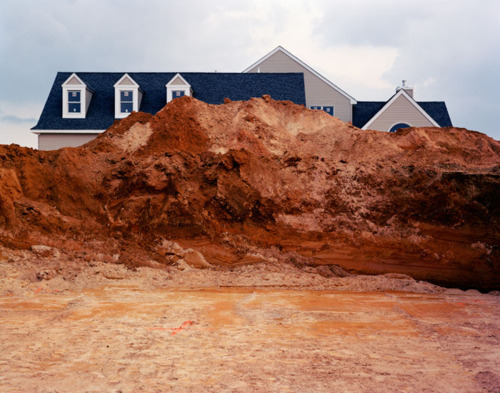
© Justin James Reed, “Monroe, New Jersey” 2006, from the series 'New Cities'
'New Cities', which I began work on in graduate school, came out of a renewed interest in the distinctly eastern landscape. Throughout my life I have lived all over the country, and the specific experience of moving from rural Northern Idaho to Philadelphia had a profound effect on my work and photographic practice. With “New Cities”, I was immediately reacting to the suburban and energy infrastructure that appeared to, at times, dominate the landscape, overwhelming and shaping it in systematic ways. However, it became clear to me that as I began getting deeper into the project my conceptual interests were shifting. I found myself more fascinated in the actual images themselves, than any specific representative context of the spaces. This realization; that I was drawn to these spaces more for what they looked like, when captured photographically, rather than for any purely documentary aspects they might contain, was crucial. While I remain interested in the core issues that brought me to the work, that project helped to clarify my primary concern artistically, which is the image (as object) itself. My recent work deals more specifically with this concept, and I now view the materials of photography, in my own practice, as sculptural and fundamentally aesthetic.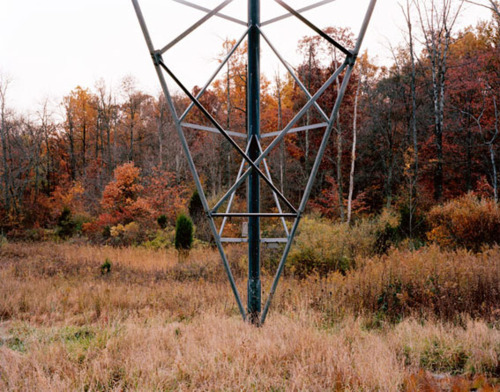
© Justin James Reed, Adamstown, Pennsylvania 2009, from the series 'New Cities'
As with any teacher, one’s primary interest in the medium will guide their understanding of technique and application. While I do not want to force a specific dogma on my students per se, I orientate my class projects with historical context, but contemporary applications in mind. My active engagement with other artists, through my affiliation with the collective Piece of Cake and the broader art scene, is crucial in shaping my views of what photography is and where it belongs in a contemporary setting. Therefore projects change and vary based on new notions of how to expressively approach the medium. Whether it is treating the photographic record or photographic object itself in a sculptural fashion, or exploring the burgeoning areas of web and multi-based media(s), my courses are focused on allowing students the opportunity to find a method of working that suits their particular interests and concerns. While the contemporary landscape, or landscape in general, always has a place in conversation surrounding my classes, I try to reinforce the notion that landscape typically acts as metaphor for larger issues in the best of work. Therefore, artists who employ a considered and relevant approach to working within a landscape always have a place in my lectures and class discussions.
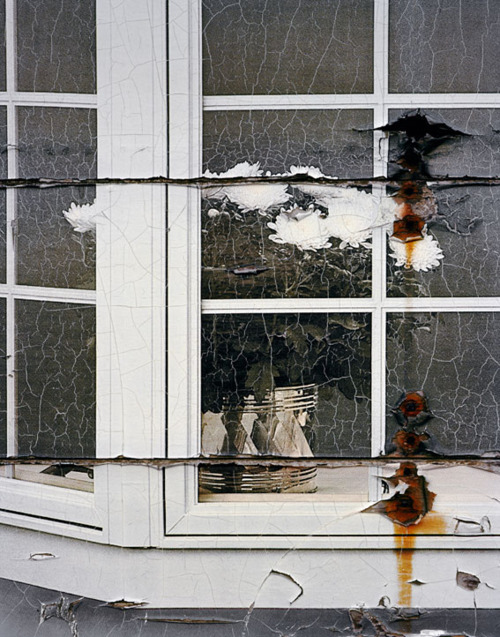
© Justin James Reed, (Untitled) 2011, from the series 'In Heaven' (TDIAQB)
You are a member of Piece of Cake Project, the international network of photographers. Can you describe this group? How does it function? Aside from the obvious benefits of international connections, what are some of the unexpected benefits you discovered through your meetings? In addition to your creative career, how does this affiliation compliment your teaching career?
JJR: Piece of Cake has been more than instrumental in my understanding of the broader context and cultural place of photography around the world. The experience of working within this group of dedicated and forward thinking artists has been nothing short of life changing. In addition, the variety of perspectives coupled with the various stages of member’s careers, has enlightened my concept of perspective when approaching my own career and life as a working artist.
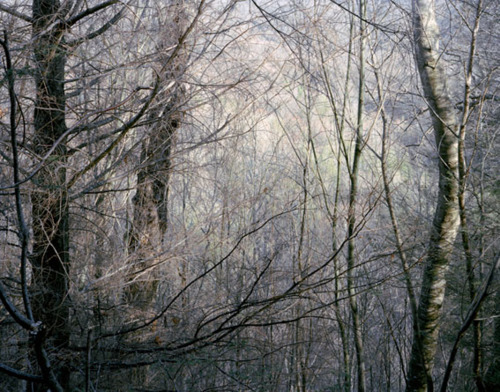
© Justin James Reed, 100 Prime Mountain Acres, Whitetop, Virginia 2011, from the series 'The Real Unknown'
At it’s most basic the group currently has two main components, one set of artists based in Europe, and the other in North America. The European group was organized by French photographer Charles Fréger a little over 10 years ago, out of a desire for deeper connection and discourse within the broader photographic community. This was, of course, before the explosion of social media, and the Internet as we know it now for the matter, but even as those innovations have invaded all our lives, the core concerns of the wider group remain the same. Those concerns, as I see them, manifest themselves most clearly in the four workshops that are held in various locales around Europe and North America yearly. At these workshops, which typically last anywhere from 4-7 days, members share work, discuss current concerns, and most importantly spend close personal time with each other. That personal interaction is in many ways the most critical and important part of participating in the collective. Building upon relationships, some of which were established long before the group was founded, is a fundamental key to surviving as an artist. Without your peers emotional and intellectual support I believe it is impossible to survive. We chose a lifestyle that is demanding on both our personal and professional lives all at once. Having a group to commiserate with, to share in an ongoing organic experience with, is invaluable. Perhaps the most unexpected role Piece of Cake has played in my life, although now it seems so obvious, is in establishing friendships. For me, it is the close friendships that have developed out of the experience that make it so incredible, some of which I consider the most important in my life, not only now, but hopefully for its entirety. In terms of the classroom, the energy and excitement that is generated by this collective at both the workshops and through ongoing online discourse is incredibly valuable. I am consistently able to bring in new resources to share, both artistic and practical in nature. Hearing the voice of other working artists, their struggles and successes, helps to enlighten discussion and also my ability to concretely articulate the varied concerns my students have and may encounter. Most importantly, I believe my close understanding of the significance of interpersonal relationships and dialogue with one’s peers in one’s life, might be the most rewarding experience from the group that I bring to my classes.
Can you discuss the role of digital and web media in your classroom? How does VIC photo program distinguish itself in use of these media? What are the positives and potential negatives of this relationship?
JJR: When I took the job, it was very clear that I was specifically hired to instruct the digital photography and web based courses at Virginia Intermont College. While, as mentioned before, I still teach a wide variety of classes, I believe the primary reason I was offered the job was the intricate role web and digital media play in my curriculum and approach to teaching. Probably one of the most immediate manifestations of this is that on the first day of class all my students start a personal blog. These act as an aggregate of our larger class blog, and as a forum for students to enter into an ongoing (visual) dialogue with their fellow classmates, myself, and perhaps most importantly, themselves. Found artists, responses to essays and lectures, and in-progress work are all posted there for everyone to engage and interact with. Helping my students to realize what a valuable and necessary resource the web is, and will be, for them to build awareness of other artists and their own work, is a critical component of my course goals.

© Justin James Reed student’s work: Lena Stevens, 2010
Beyond this however, one aspect I consistently engage my students with, especially in the digital imaging and web design courses, is the fact that these are specific mediums in themselves, and one must apply them as such. While a DSLR may seem to have all the qualities of traditional film photography, minus the technological variations, it is my assessment that digital photography is in fact a very different medium than film photography. Perhaps this is an obvious assumption, but I believe it is crucial for my students to understand that the tools and interaction one explores their subject through, will most certainly inform how they go about considering and articulating their perspective. To say that the immediacy and flow of digital photography does not have an effect on ones practice is to deny what it is at it’s most basic. By encouraging my students to embrace and make use of these concepts, while working within the broader medium of photography, is important to pushing them and the form itself forward.
© Justin James Reed student’s work: Wendy Musick, 2011
The same goes for web design. It is necessary to understand ones audience while developing a web presence, but how else can the web be used? There are such a wide variety of approaches; from blogs, to social networking, to online magazines, to web based art projects, that just saying, “build a website,” is clearly not enough. To be actively engaged in how new media is being applied, whether it relates to a students individual practice or not, is to be a participant in contemporary society. There are so many lessons to be learned for living both online and off from the web that it’s instructional role is undeniable. Additionally, the almost universal inclusion of HD video capabilities on DSLR cameras, has recently added a new and exciting facet for photography students to consider. With video right there at the turn of a wheel, I think it is to be expected that photographers think about the difference between static and moving imagery. When is one attracted to something purely for it’s animated qualities, only to strip those away by creating a still image through photography? While merely a starting point, I believe this line of inquiry will inevitably lead my students to not just be photographers. Instead they will have a foundation of understanding of visual media that can help guide them through whatever future endeavor they take on.
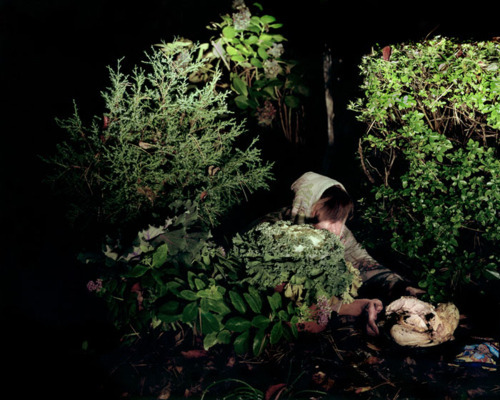
© Justin James Reed student’s work: Molly Morlock, 2008
The potential negatives and positives of this relationship are in many respects ones that photography instruction has always faced; how to avoid getting lost in the technical prowess necessary to achieve strong results, while leaving time to explore creative possibilities? This is a critical question that all photography programs must address. While there are surely a wide variety of opinions amongst my colleagues as how to best approach this issue, I personally believe that technical ability is developed primarily through application. Therefore giving my students exciting and open-ended assignments, through which they are required to demonstrate both critical thinking and technical ability, I hopefully get close to achieving not only good results, but also engaged and thoughtful use of the medium. After all, that is truly what is most important.
---
LINKS
Justin James Reed
United States
share this page